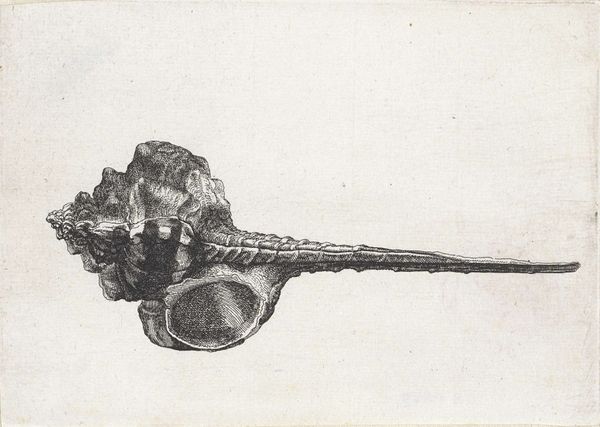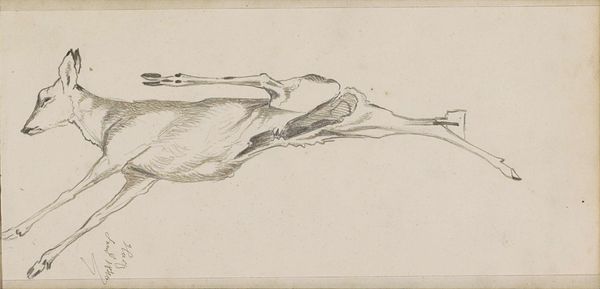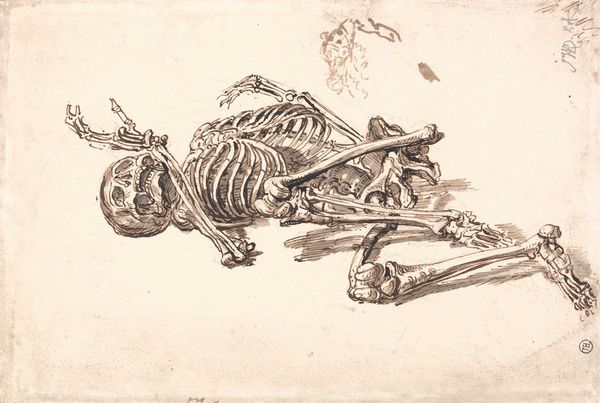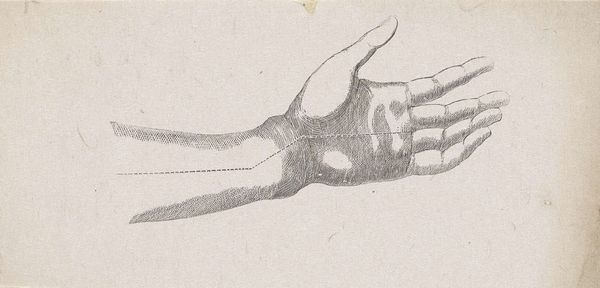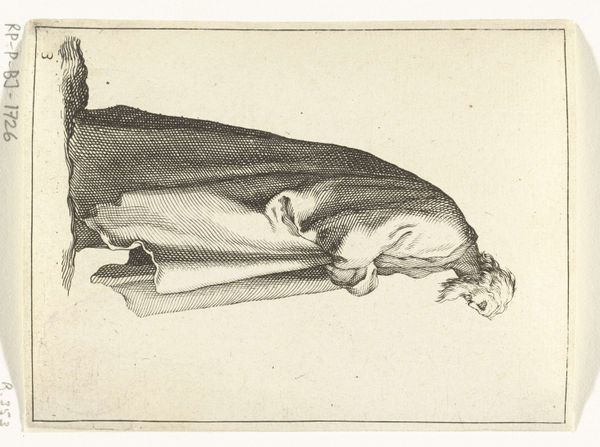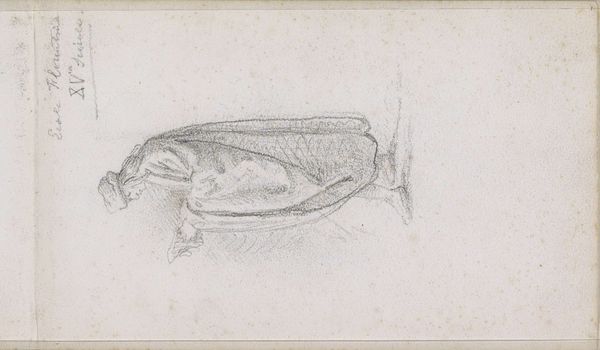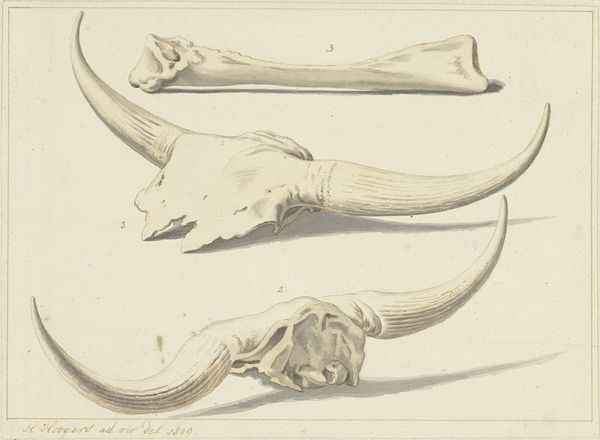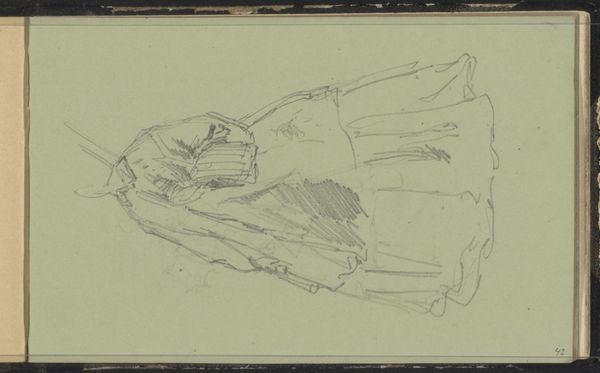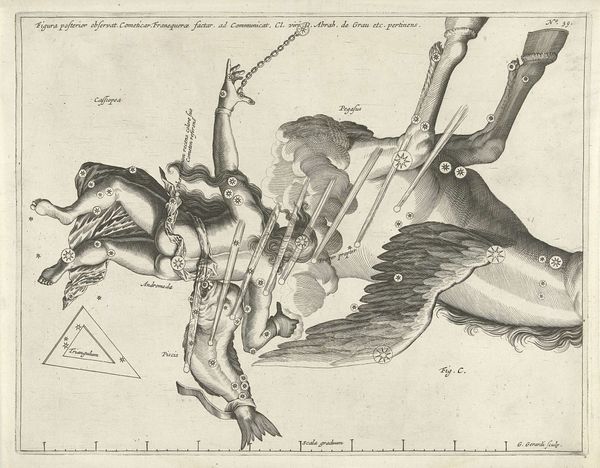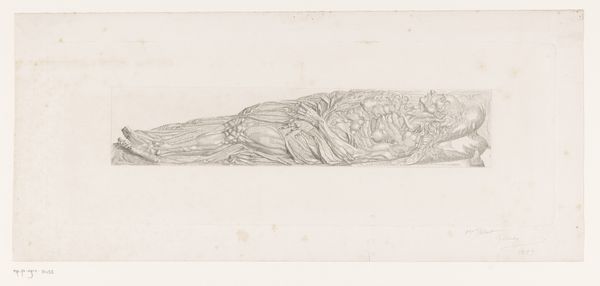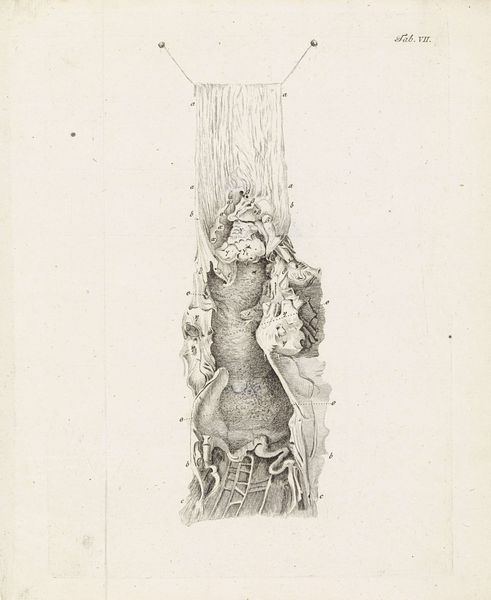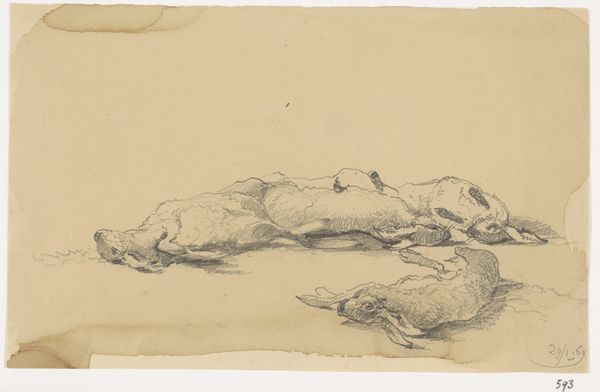
drawing, pencil
#
drawing
#
fantasy-art
#
figuration
#
pencil
Dimensions: height 101 mm, width 235 mm
Copyright: Rijks Museum: Open Domain
Editor: This pencil drawing, "Liggend skelet met kroon en scepter," which translates to "Lying skeleton with crown and scepter," made by Richard Nicolaüs Roland Holst, sometime between 1878 and 1938 and housed in the Rijksmuseum, is a bit unsettling, isn't it? What story do you think it tells? Curator: I see a powerful commentary on mortality and the futility of earthly power. The crown and scepter, symbols of sovereignty, are rendered meaningless in the face of death. Editor: So, it's a statement on power structures of that era, that collapse with inevitable death? Curator: Precisely. Holst likely engaged with themes prevalent in fin-de-siècle art, where societal anxieties about decay and the transience of life were frequently explored. Consider the rising socialist movements during that period. What role might images like this play in challenging existing hierarchies? Editor: Maybe it’s a bit of subversive imagery—almost suggesting that even rulers become skeletons, eventually? It would appeal to those seeking more egalitarian society... Is that fair? Curator: I think that’s astute. And to what extent does the image’s distribution – whether limited to an elite artistic circle or widely disseminated – affect its socio-political impact? It speaks to the dynamic interplay between artistic production, patronage, and public reception. What if this was never shown? Editor: Good question! That's fascinating to consider. So this is not just a still life but really a loaded commentary of mortality with specific targets in mind. It makes you rethink about imagery of those days! Curator: It’s a potent reminder of art's capacity to engage with profound questions about power, legacy, and the human condition across historical contexts.
Comments
No comments
Be the first to comment and join the conversation on the ultimate creative platform.
